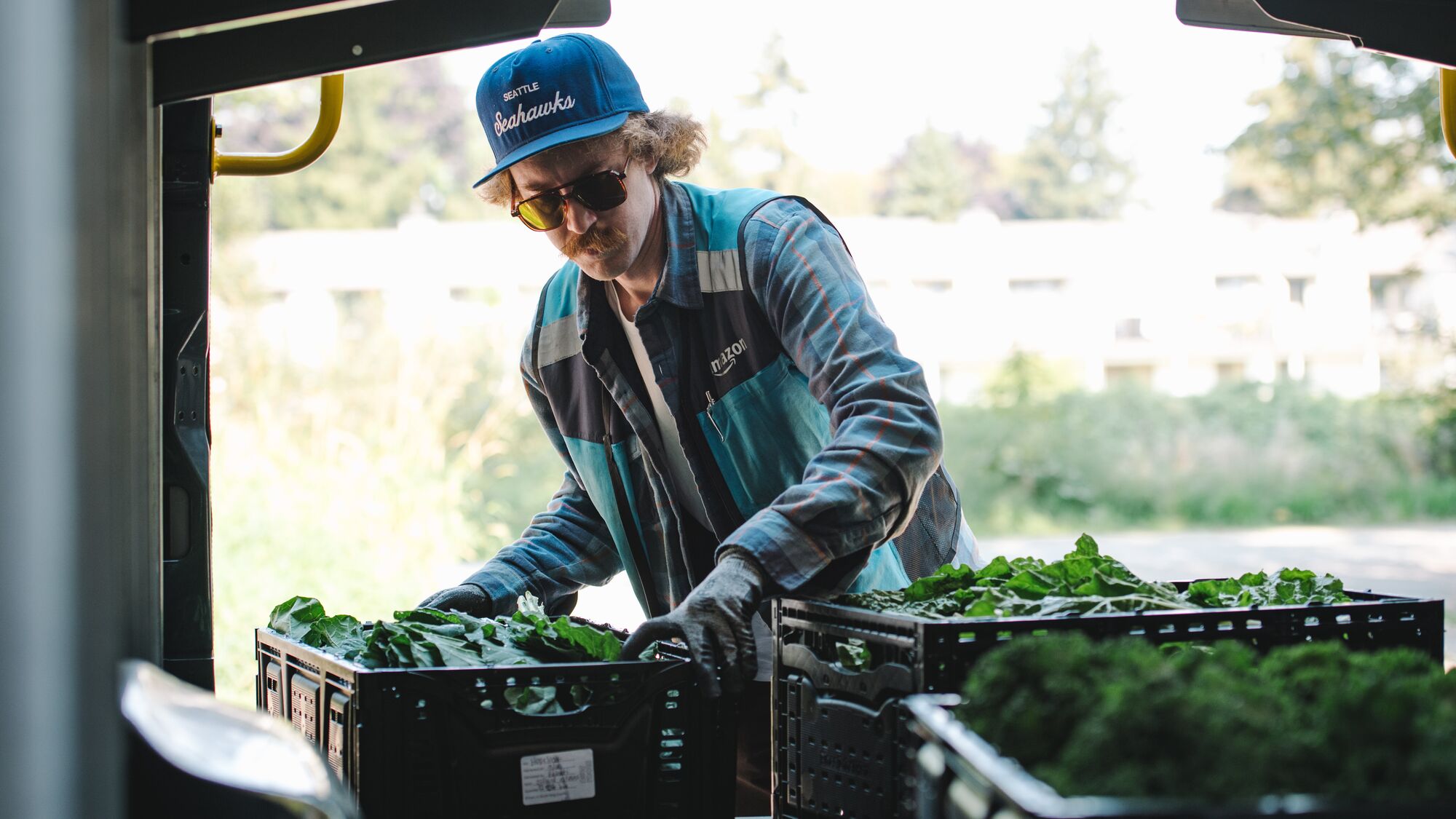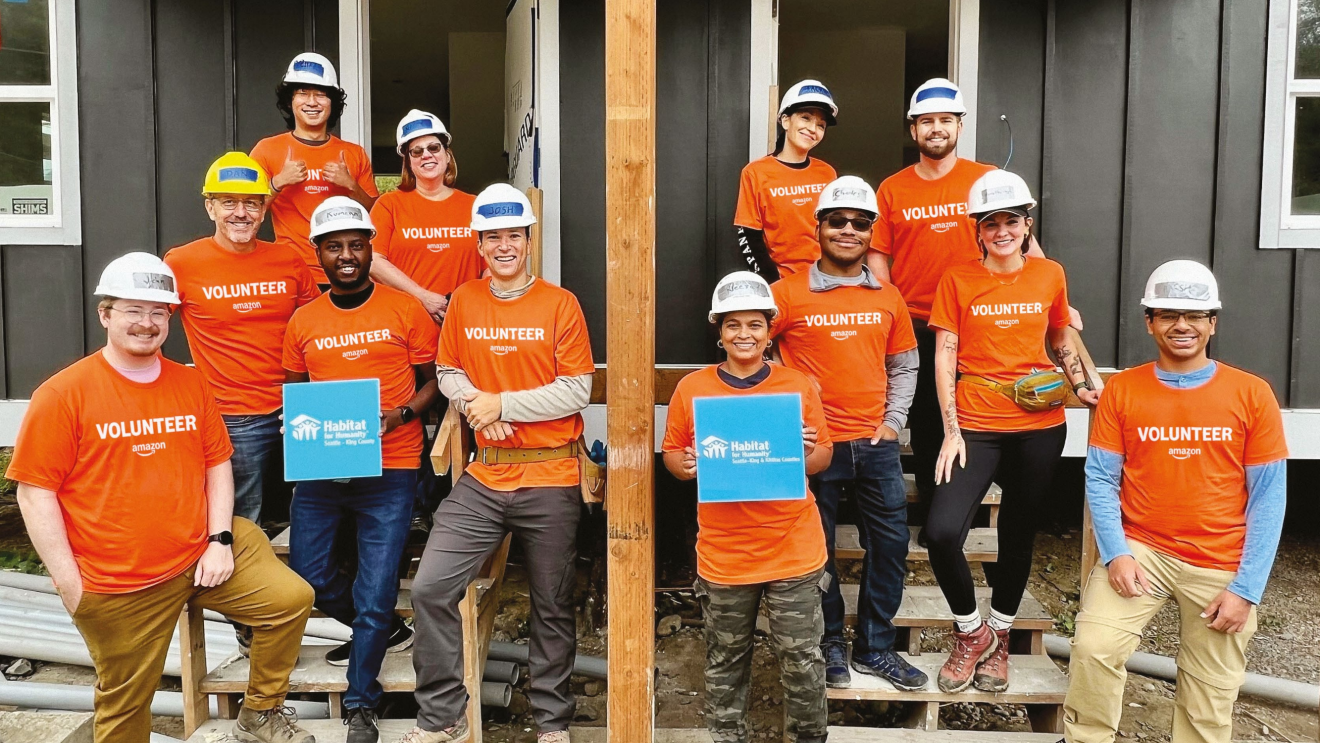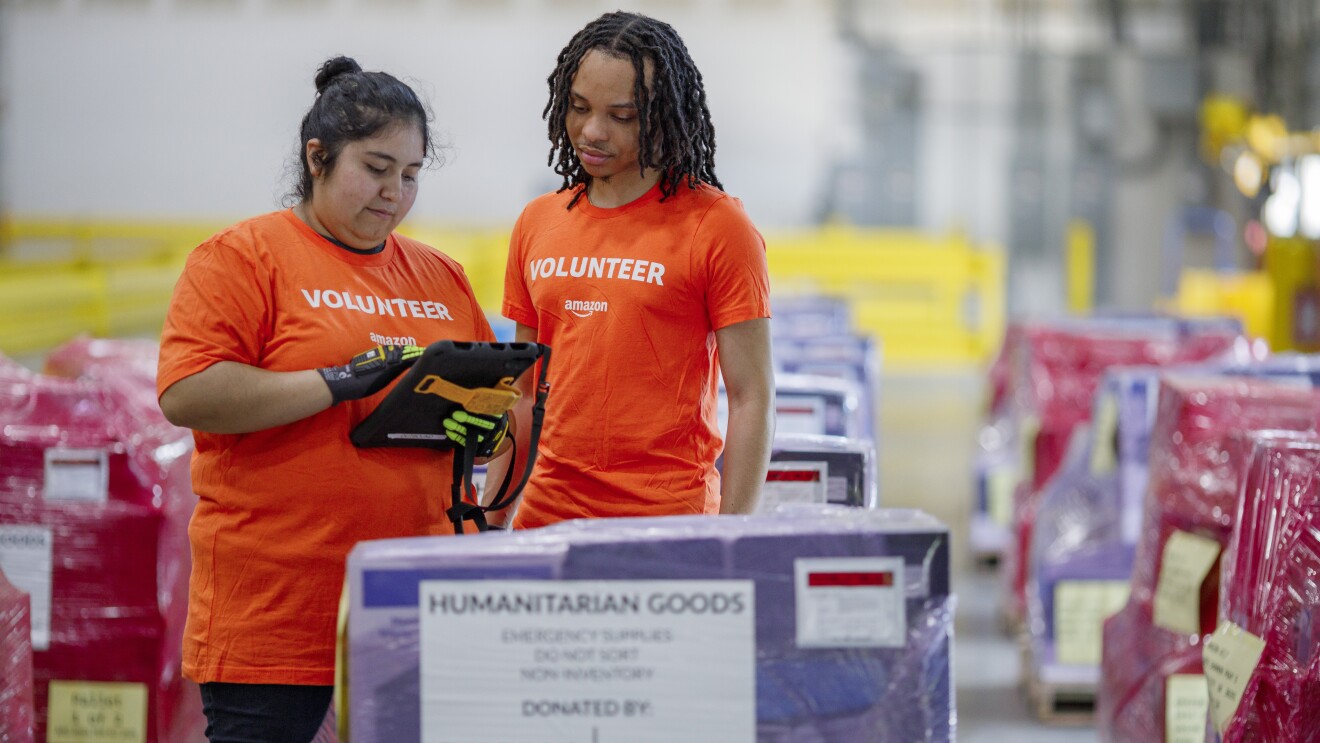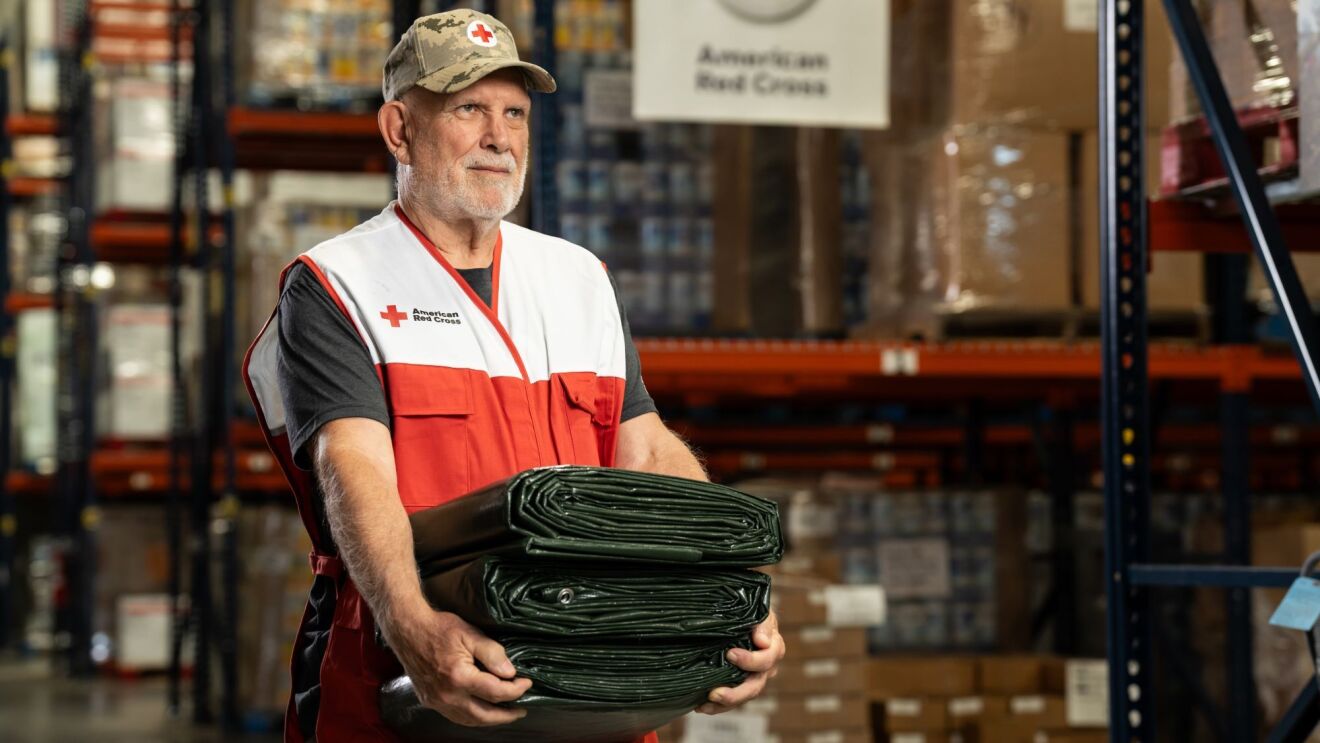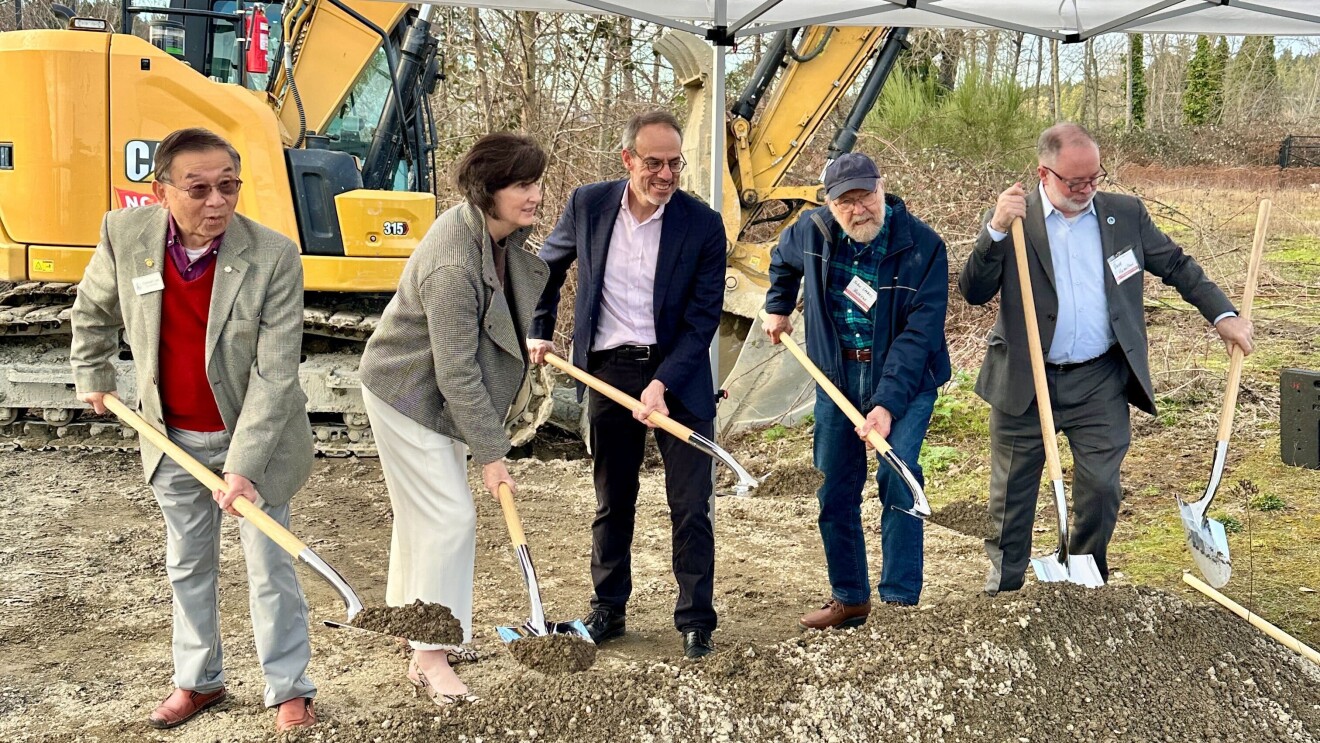Key takeaways
- Amazon has delivered more than 60 million free meals from food banks to families across the US and UK.
- Amazon is extending its commitment to provide free home delivery services for food bank partners through 2028.
- Amazon's logistics network also supports bulk transportation for food banks and specialized food delivery solutions for rural communities.
Amazon announced at Delivering the Future 2025 in San Francisco that the company has delivered more than 60 million meals, for free, from food banks across the United States and United Kingdom directly to families and individuals in need.
Amazon is also extending its commitment to continue providing free delivery services through 2028. This multi-year commitment ensures our more than 40 food bank partners can plan with certainty and invest confidently in their home delivery operations.
"The impact of home delivery goes beyond convenience—research shows that it can save families on average $100 monthly in time and travel costs," said Bettina Stix, Amazon's global director of community impact. "By extending home delivery through 2028, we're committing to continue using our delivery network to help ensure families have reliable access to nutritious meals."
When it comes to food insecurity, the challenge isn't always about having enough food—it's about making sure that food reaches neighbors facing hunger. Food insecurity, defined as when people don't have enough to eat or don't know where their next meal will come from, affects 47 million people in the U.S. annually, according to the U.S. Department of Agriculture.
This partnership helps food banks reach people facing transportation barriers, mobility challenges, or other obstacles that prevent access to traditional food assistance programs.
Free home delivery brings food banks directly to families
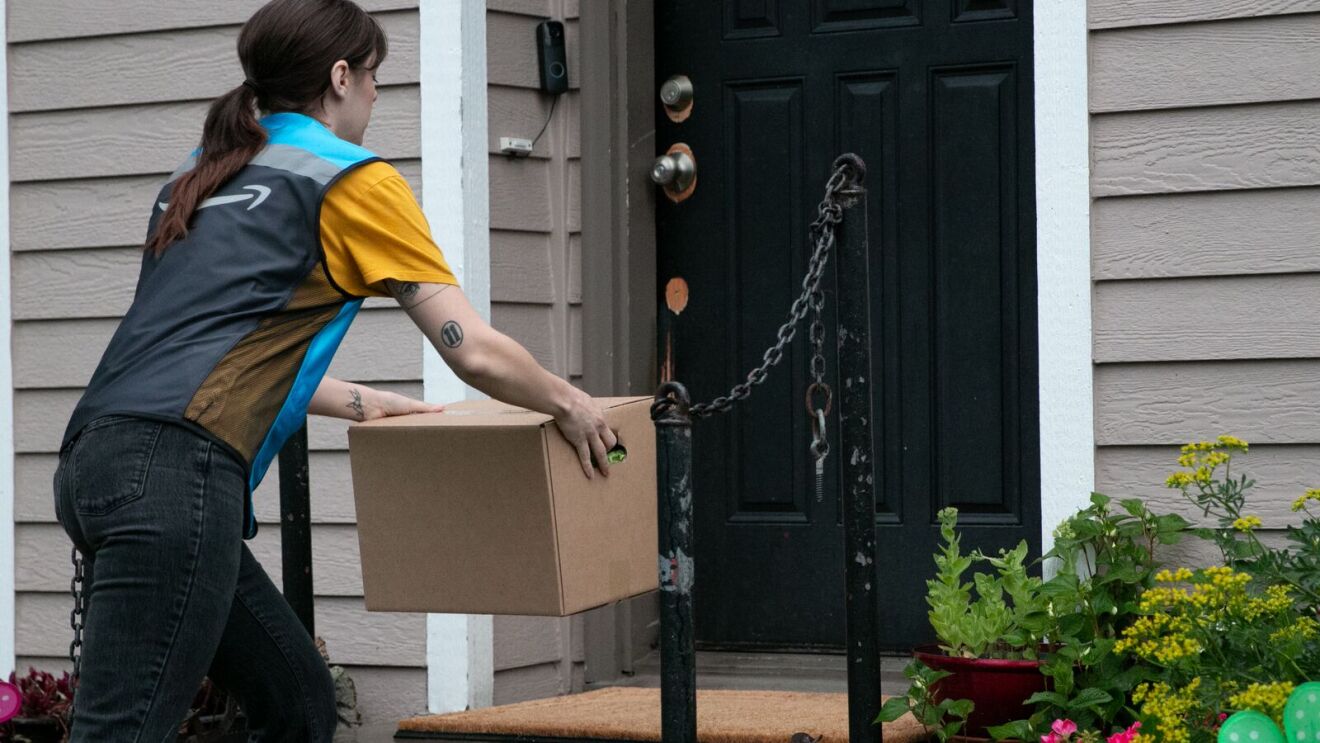
Amazon's home delivery program leverages the same powerful network that serves millions of customers daily—including Delivery Service Partners, Amazon Flex drivers, and our rural delivery infrastructure—to ensure families receive food without worrying about transportation.
What began during the pandemic as an emergency response has evolved into a long-term mission to expand food access. The multi-year commitment ensures food bank partners can plan with certainty and invest confidently in their home delivery operations.
The impact goes beyond convenience. Research shows that home delivery saves families approximately $100 per month in time and travel costs.
“Feeding America is committed to providing solutions to end hunger, and food delivery programs play a vital—and growing—role in reducing food insecurity,” said Erika Thiem, chief supply chain officer, Feeding America. “Through free home delivery, Amazon helps expand access to critical food assistance by meeting participants where they are and supporting greater choice, convenience and peace of mind.”
Home delivery isn't the only way Amazon is helping families with access to food. Amazon is also strengthening food banks with bulk delivery and reaching rural communities with an expanded network.
Supporting food banks
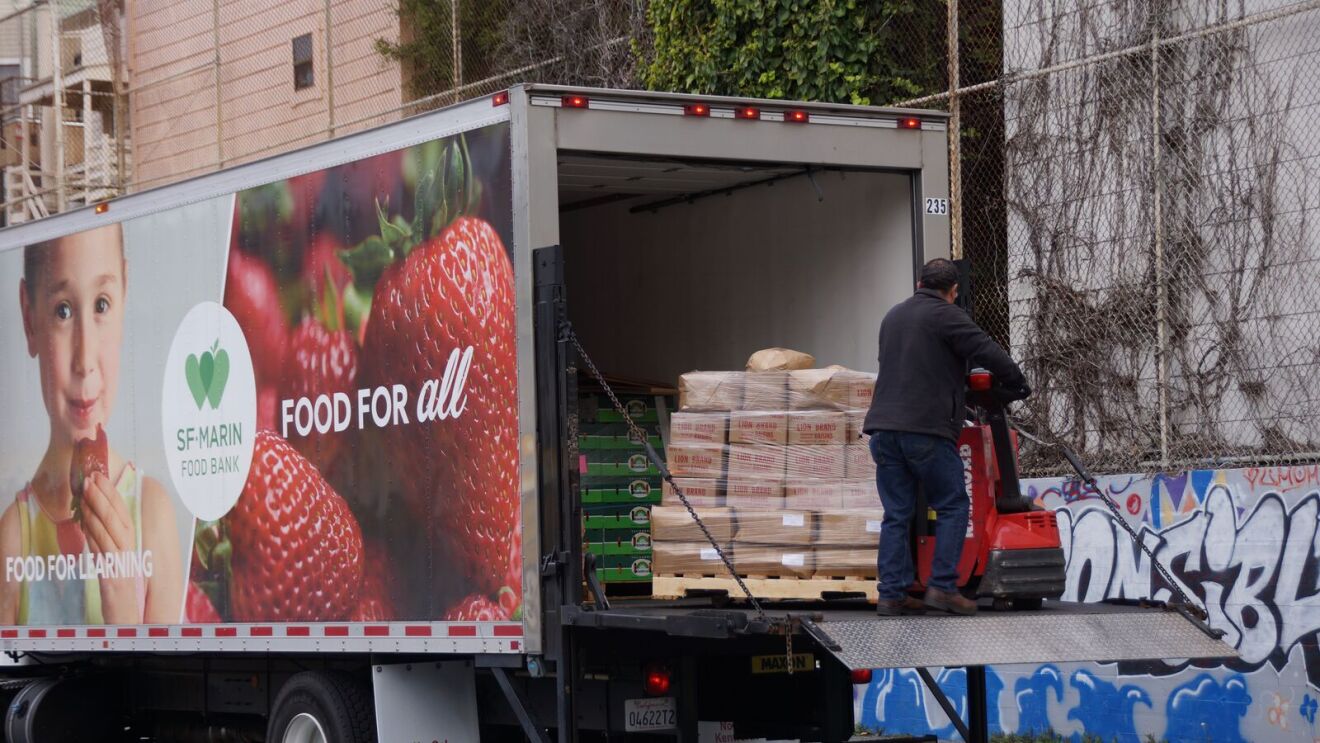
While home delivery directly helps individuals, Amazon also works upstream by helping food banks move large quantities of food efficiently.
"Transportation can be expensive, and we help by putting our logistics network to work—using vans, trucks, and routes to help organizations get what they need quickly and reliably," said Amanda Adcock-Worthy, head of Amazon Local Good. "We transport tens of thousands of pounds of food for our community partners around the world, each week, for free."
Amazon transports groceries from suppliers to food banks, and from food banks to pantries, schools, and other community distribution points using its fleet of tractor-trailers, box trucks, and vans. This bulk delivery model helps keep the food assistance network supplied so they can reach more people.
Behind these deliveries is a coordinated effort with partners to schedule efficient routes and the drivers who make it all possible.
For a DSP delivery associate like Paul Williams, these food rescue routes are more than just deliveries—they're a way to strengthen the communities they call home.
"I enjoy being a part of the donation process running food to where it needs to go," Williams said. "I was new in town, and it was a great way to feel like I was part of something bigger than myself, trying to give back as I can. The food always went to a good place. I'm thankful to meet such dedicated people."
In the Puget Sound region, Amazon partners with Harvest Against Hunger to transport tens of thousands of pounds of fresh produce each week from farms to nonprofits. This not only prevents food waste but ensures communities receive high-quality fruits and vegetables.
Helping rural communities with food access
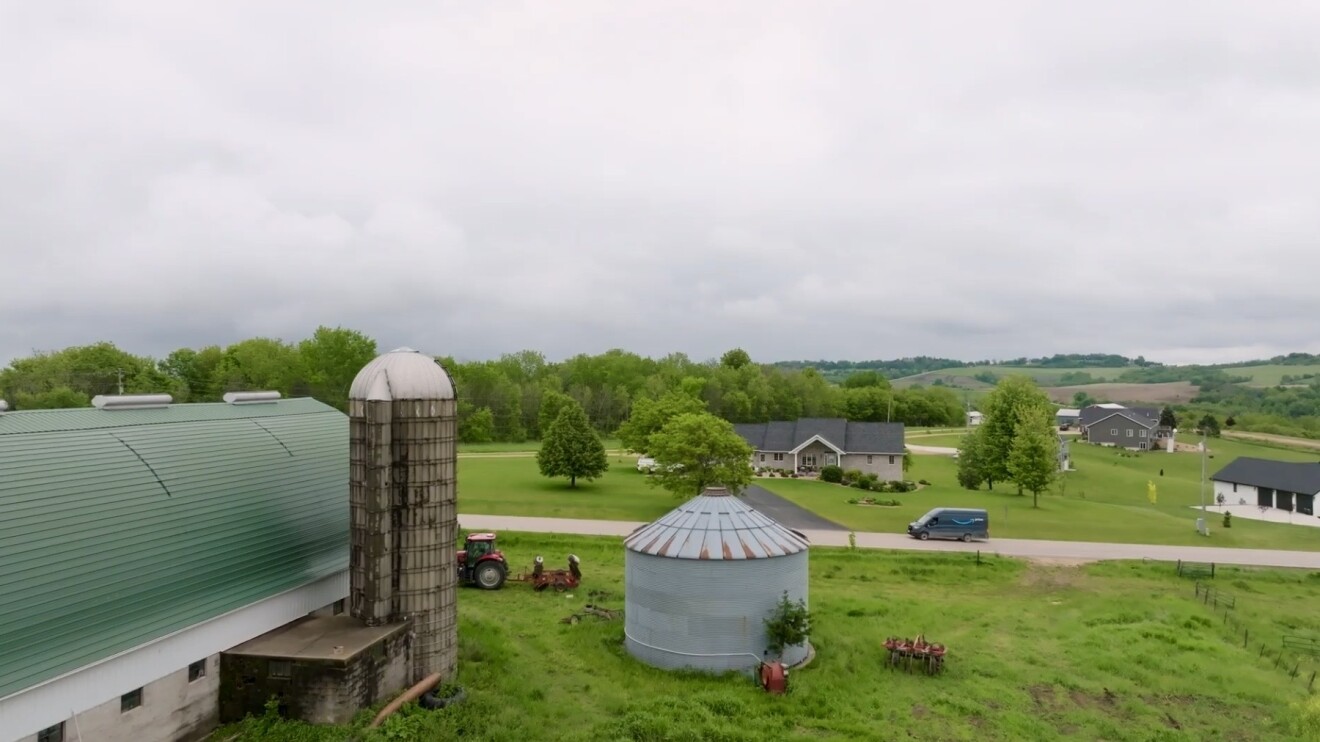
Rural communities face unique challenges when it comes to food access. Even the nearest food bank or pantry might be hours away, and limited infrastructure can make food distribution difficult.
To help address this, Amazon is piloting new programs designed specifically for rural areas. This summer, leveraging our growing rural delivery network, Amazon delivered meals to kids while school was out, ensuring that distance isn’t a barrier to nutritious food.
“Fighting hunger is something we can only do together,” said Sarah Steely, director of No Kid Hungry Virginia. “Through our partnership with Amazon, we're bridging the critical gap between children and nutritious meals, particularly during summer months when school meals aren't available. We’re thrilled to see more kids in rural counties being reached with meals at home, and we're excited to continue developing innovative solutions to reduce summer hunger together.”
From truckloads of produce to doorstep deliveries, Amazon is committed to using our scale, speed, and delivery expertise to improve access to food in our communities.
